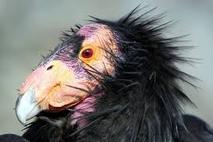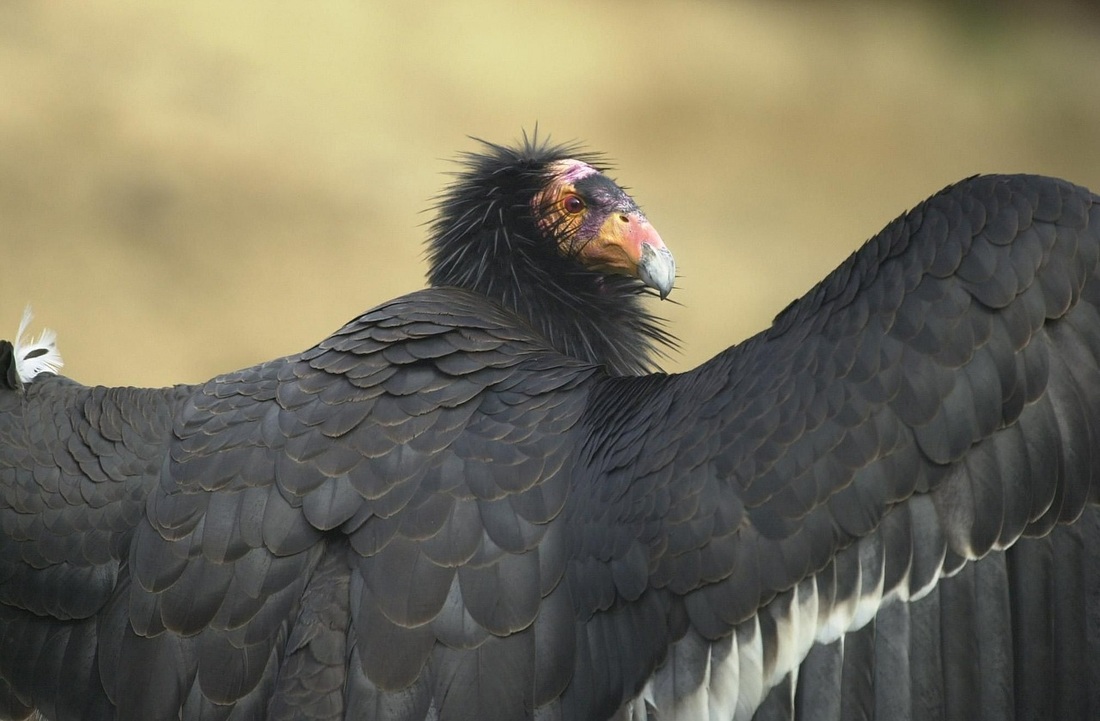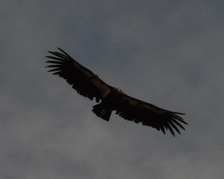| The California Condors are the largest flying birds in North America, with wings spanning to an amazing size of nine and half feet! The California Condors are classified as Critically Endangered (CR) by the IUCN Red List. Sadly, this species numbers declined drastically up to the point that in 1982 there were fewer than 25 condors left in the wild. Drastic measures were taken in order to save this species from extinction. |
Extensive conservation effort were taken to captive-bred condors and re-introduce them back into the wild. Therefore in 1987 the last of the free-flying condors were taken into captivity and there were no California condors in the wild between 1988 and 1991.
The conservation breeding program was run by San Diego Wild Animal Park, Los Angeles Zoo and The Peregrine Fund.
In 1992 reintroduction efforts began and in 2002 the first wild condor chick for two decades hatched. by 2013 there were approximately 435 California condors in the world, about 237 of which free-flying in California, Arizona and Baja California, Mexico.
The conservation successes so far has been inspiring and the California Condor’s population continues to climb. Today the condors are once again seen soaring over California.
But the rescue of the Californian Condor is an ongoing conservation program. They are still facing many threats: loss of habitat, shootings, pesticide residue, lead poisoning, and collisions with power lines.
California Condors are best spotted near Grand Canyon National Park, AZ; Glen Canyon National Recreation Area, AZ/UT; and Pinnacles National Monument, CA.
The conservation breeding program was run by San Diego Wild Animal Park, Los Angeles Zoo and The Peregrine Fund.
In 1992 reintroduction efforts began and in 2002 the first wild condor chick for two decades hatched. by 2013 there were approximately 435 California condors in the world, about 237 of which free-flying in California, Arizona and Baja California, Mexico.
The conservation successes so far has been inspiring and the California Condor’s population continues to climb. Today the condors are once again seen soaring over California.
But the rescue of the Californian Condor is an ongoing conservation program. They are still facing many threats: loss of habitat, shootings, pesticide residue, lead poisoning, and collisions with power lines.
California Condors are best spotted near Grand Canyon National Park, AZ; Glen Canyon National Recreation Area, AZ/UT; and Pinnacles National Monument, CA.
Learn more about the California Condor Biology
California condors live in rocky, forested regions including canyons, gorges and mountains. Their current range includes California’s southern coast from Big Sur to Ventura County, east through the Transverse Range and the southern Sierra Nevada, with other populations in northern Baja California and in the Grand Canyon ecoregion in Arizona.
Condors can soar to heights of 15,000 feet and may travel up to 150 miles a day in search of their next meal. They find their food mostly by their keen eyesight. Like other scavengers, condors are part of nature’s cleaning crew and play a vital role in the natural ecosystem.
California condors normally breed once every two years, producing only one egg. They provide an extensive amount of parental care, the chick learns to fly when they are about 6 months old but will stay with the parents for many more months. The condor’s feed their offspring until it learns to find its own food, which could take a year. California condors are capable of reaching up to 60 years of age in the wild.
Condors can soar to heights of 15,000 feet and may travel up to 150 miles a day in search of their next meal. They find their food mostly by their keen eyesight. Like other scavengers, condors are part of nature’s cleaning crew and play a vital role in the natural ecosystem.
California condors normally breed once every two years, producing only one egg. They provide an extensive amount of parental care, the chick learns to fly when they are about 6 months old but will stay with the parents for many more months. The condor’s feed their offspring until it learns to find its own food, which could take a year. California condors are capable of reaching up to 60 years of age in the wild.
For further information:
The Peregrine Fund:
www.peregrinefund.org
San Diego Wild Animal Park:
www.sandiegozoo.org/animalbytes/t-condor.html
BirdLife International’s World Bird Database:
www.birdlife.org/datazone/species/index.html?action=SpcHTMDetails.asp&sid=3821&m=0
NatureServe Explorer:
www.natureserve.org/explorer/servlet/NatureServe?searchName=Gymnogyps+californianus
www.peregrinefund.org
San Diego Wild Animal Park:
www.sandiegozoo.org/animalbytes/t-condor.html
BirdLife International’s World Bird Database:
www.birdlife.org/datazone/species/index.html?action=SpcHTMDetails.asp&sid=3821&m=0
NatureServe Explorer:
www.natureserve.org/explorer/servlet/NatureServe?searchName=Gymnogyps+californianus



